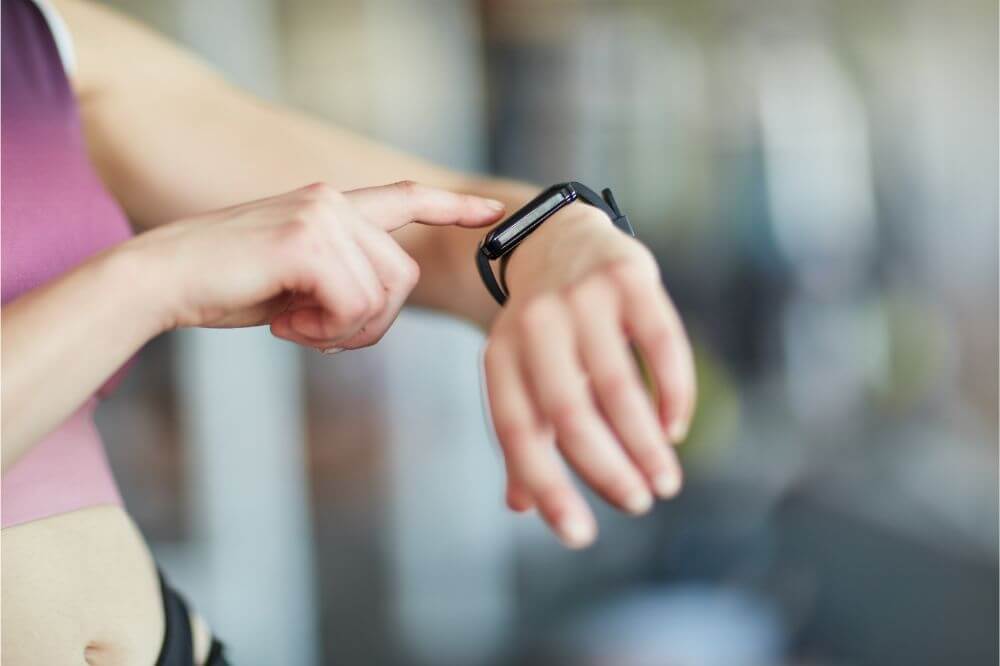If you aim to live a healthier life, you might consider investing in a fitness tracker. Fitness trackers have different functions; the most basic ones measure calories burned, steps taken, distance traveled, and more. In addition, they’re designed to show how active you are.
However, for professional athletes, these fitness trackers can have more functions. For example, some trackers can measure your blood pressure. Most measure your heart rate, but some take this one step further.
A healthy blood pressure level is crucial to your overall health, so having a fitness tracker that informs you of less than ideal blood pressure levels could theoretically save your life.
So, can fitness trackers measure blood pressure? Moreover, if they do measure blood pressure, how accurate are they? Finally, how do fitness trackers measure blood pressure in the first place? These are all questions this article will answer.
How Fitness Trackers Measure Blood Pressure
Fitness trackers can measure blood pressure, but not all fitness trackers can do so. This is a unique function that is built into the model.
Therefore, if you want this function, you will pay extra. If a fitness tracker doesn’t say that it can track blood pressure, it can’t. This is a listed feature to look for when shopping.
There are two ways your blood pressure can be measured with such a wearable device.
Some fitness trackers will use oscillometric monitoring. This is more or less what you get when you have your blood pressure checked by a doctor. The cuff on your fitness tracker will automatically inflate. This results in your arteries narrowing, and therefore blood will not flow through them.
The pressure is then released to allow the blood to pass. There is a pressure sensor that can measure your arterial oscillations and pulsations. When the reading reaches the maximum value, this is noted. This is then used to determine both your diastolic pressure and systolic pressure.
The other technique is known as photoplethysmogram, or PPG for short. This is a heart rate sensor with an integrated pulse oximeter. The principle is that of light absorption. So there is a light with a sensor, which illuminates your skin.
The unit will then monitor how much light is absorbed. The unit can then determine how much blood is in your arteries and how much pressure there is. Simply put, the light reflected back from your skin will be directly proportional to blood volume variations within your veins and arteries.
Both methods of measuring blood pressure are relatively accurate. However, with that being said, the former of the two is generally unrealistic to have on wearable fitness monitors.
Having an inflating cuff requires extensive technology and expensive construction. Using PPG is a much more cost and spatially effective option. In addition, it’s much more realistic to have PPG on a fitness monitor.

Accuracy of Blood Pressure Monitoring with a Fitness Tracker
Oscillometric monitoring is very accurate, which is why doctors use it. However, as mentioned above, this type of blood pressure monitoring is generally unfeasible with wearable fitness trackers. For this reason, your fitness tracker will likely use PPG. For the most part, if you get a high-quality unit, these PPG sensors will be pretty accurate. However, they are not quite as accurate as the professionals’ oscillometric method.
If you are worried about the accuracy of your unit, you can always have it tested. For example, you can go to your local clinic and have a professional measure your blood pressure. You can then immediately compare it to the readings provided by your fitness tracker. You know that your fitness tracker is relatively accurate if they are close.
Fitness trackers measure heart rate and blood pressure well when you are not active. This is especially the case with blood pressure. The issue is that decreased or increased physical activity can affect blood pressure.
Therefore, if you have just exercised for an hour, the fitness tracker will tell you that your blood pressure is much higher. This is an issue because your blood pressure should be measured when resting, not after just being active.
Remember that PPG uses light sensors to determine your blood pressure. Therefore, basic things such as movement can also affect these readings. For example, if you move too much while using a fitness tracker to measure blood pressure, the readings will not be accurate.
Also, keep in mind that blood pressure during the night is generally lower than during the day. This is something else that most basic fitness trackers don’t really account for. Other things such as body temperature and ambient light can also adversely affect blood pressure readings.
So, what it comes down to is that this type of PPG blood pressure monitor is fine for basic use. If you are a normally healthy person, even if the readings aren’t 100% accurate, you will still have a good idea of your blood pressure. However, if you have serious cardiac or health issues, a professional-grade blood pressure monitor is recommended.
How to Use a Fitness Tracker Blood Pressure Monitor
- Always measure your blood pressure when resting, not during or directly after activity. You should also avoid stimulants such as nicotine and caffeine.
- Be sure to always take two readings. This way, you can compare the results for accuracy.
- Make sure that the fitness tracker is neither too loose nor too tight. This can also adversely affect readings.
- Have your arm resting on a flat surface. Make sure that your upper arm is at heart level.
Of course, always read the instructions on your device and follow them as indicated.
Conclusion
The bottom line is that some fitness trackers can measure blood pressure, whereas others cannot. Moreover, most will use the PPG method, which is accurate enough for basic use. Therefore, as long as you follow the instructions above, your readings should be pretty accurate.
